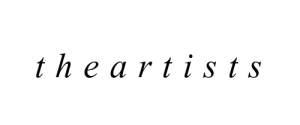Straightforward indirectness – cross-cultural negotiations in Vietnam
By Robert James Corrigan, s3410398, Hanoi campus
In two years living in Vietnam, I have repeatedly used an apparently funny phrase… “I go walking.”
As a foreigner of mixed European heritage, I already stand out in Hanoi. I frequently walk within the city, rather than riding a motorbike. To the many “xe om” drivers; local men offering services of a motorbike ride somewhere; the concept of someone wanting to walk is apparently hilarious, especially when said in my polite (and limited) Vietnamese.
What xe oms fail to realise is a golden rule of customer service, “before you give someone what they need, give them what they want” (Solomon, 2008). I want to walk short distances if able.
Any tourist to Hanoi’s Old Quarter is undoubtedly familiar with a similar situation. Whether it be politely refusing a xe om ride, bartering the fair price of a photo of you carrying some pineapples, or convincing a cyclo driver you don’t need a full hour; outsiders have ample opportunity to negotiate value with an enterprising Vietnamese person.
Few Australians would be more familiar with this than Graham Alliband. Working in the 1970s for Australia’s Foreign Affairs department, Graham served two postings to Vietnam before serving a third as Australia’s Ambassador to Vietnam from 1988 – 1991. Since then, he has chosen to make Vietnam his home, predominantly in managerial positions of developmental aid.
Currently Coffey International’s Hanoi Team Leader for the Australia Awards program, Graham is contracted to the Australian Government for the selection and management of around 200 post-graduate scholarships annually. Whilst his client is his former employer, Australia’s Department of Foreign Affairs and Trade, ultimately the beneficiaries of his work are the people of Vietnam.
Graham with his Australian Government counterpart, Simone Corrigan, attending 2014 Alumni Conference in Hanoi – photo Rob Corrigan 2014
“I have a good understanding of Vietnam,” Graham offers modestly. “Yet there is so much left to be understood; Vietnam is not an open society.” He believes Vietnam shares certain aspects with neighbouring Confucian-based societies such as Korea and China; strong and clear definitions of personal relationships in business, with clear obligations to family. Further, Vietnam stresses the importance of education for children, but doesn’t really foster curiosity (asking questions).
Graham (pictured at rear centre) with Scholarship Alumni Network delegates – photo courtesy Simone Corrigan 2013
Yet Graham suggests in business negotiations, Vietnamese people actually exhibit one very similar behaviour to Australians; a sense of humour.
“The key thing is to be personable,” he says. “Politeness is important, but if you can show your sense of humour you can lighten a situation.” According to Graham, this ability to share a joke, even teasing one another in light-hearted fashion, is something Vietnamese and Australian cultures seem to have in common. This idea is consistent with Solomon’s view of “remembering the personal side of business relationships.”
But, it’s not all drinks and laughter in Graham’s dealings with the Vietnamese. When it comes to negotiating with Vietnamese people, he says they can “be straightforward, but also indirect in their views.” Rather than being confrontational, or evading, Vietnamese parties may say very little.
Whilst Australians will meet openly, speaking our minds and asking questions, it has been Graham’s experience that delegates in a Vietnamese business meeting will keep quiet. Whether it is a cultural trait, or a learned behaviour from school or family, business delegates shy away from asking questions of foreign counterparts. Usually participants defer to their senior representative in the room. If that person is reticent or stubborn, a barrier to a successful negotiation can result.
It has been Graham’s experience however, that his ability to speak the language provides an “instant rapport” effectively cutting through such barriers. He states plainly that negotiations will be collaborative rather than competitive “if you can show an understanding of your counterparts.”
This explains the joke I seem to share with xe oms; my indirect refusal of their services is polite but also straightforward when combined with “Tôi đi bộ” (I go walking). Alternatively my Australian accent might be lending some humour to the situation. Either way, I always walk away from these exchanges to the sound of laughter and with a smile on my face – a positive outcome.
Word count: 663 (including references and quotes, but not headings)
REFERENCES:
Hoang Tuan, D 2014, COMM2384 Client Management: course notes – Negotiation Week 8, RMIT Vietnam, Hanoi
Solomon, R. 2008, THE ART OF CLIENT SERVICE, Kaplan Publishing, New York
































 This factor is one of elements that shape the organisational culture, the story behind the founder of the organisation. Mr. Phuc believes that it is essential because Ms. Huong has set the value of the company and his job, as the new comer, has to try his best in order to maintain the standard. Additionally, Sunflower has become a prestigious company for any journalist looking for the next level in their career, Mr. Phuc is not exceptional. Unlike other magazine brand, Esquire has only one headquarter in USA. Mr. Phuc always tries to perform well in his daily task so he can have an opportunity to be trained in the USA like his boss.
This factor is one of elements that shape the organisational culture, the story behind the founder of the organisation. Mr. Phuc believes that it is essential because Ms. Huong has set the value of the company and his job, as the new comer, has to try his best in order to maintain the standard. Additionally, Sunflower has become a prestigious company for any journalist looking for the next level in their career, Mr. Phuc is not exceptional. Unlike other magazine brand, Esquire has only one headquarter in USA. Mr. Phuc always tries to perform well in his daily task so he can have an opportunity to be trained in the USA like his boss.




